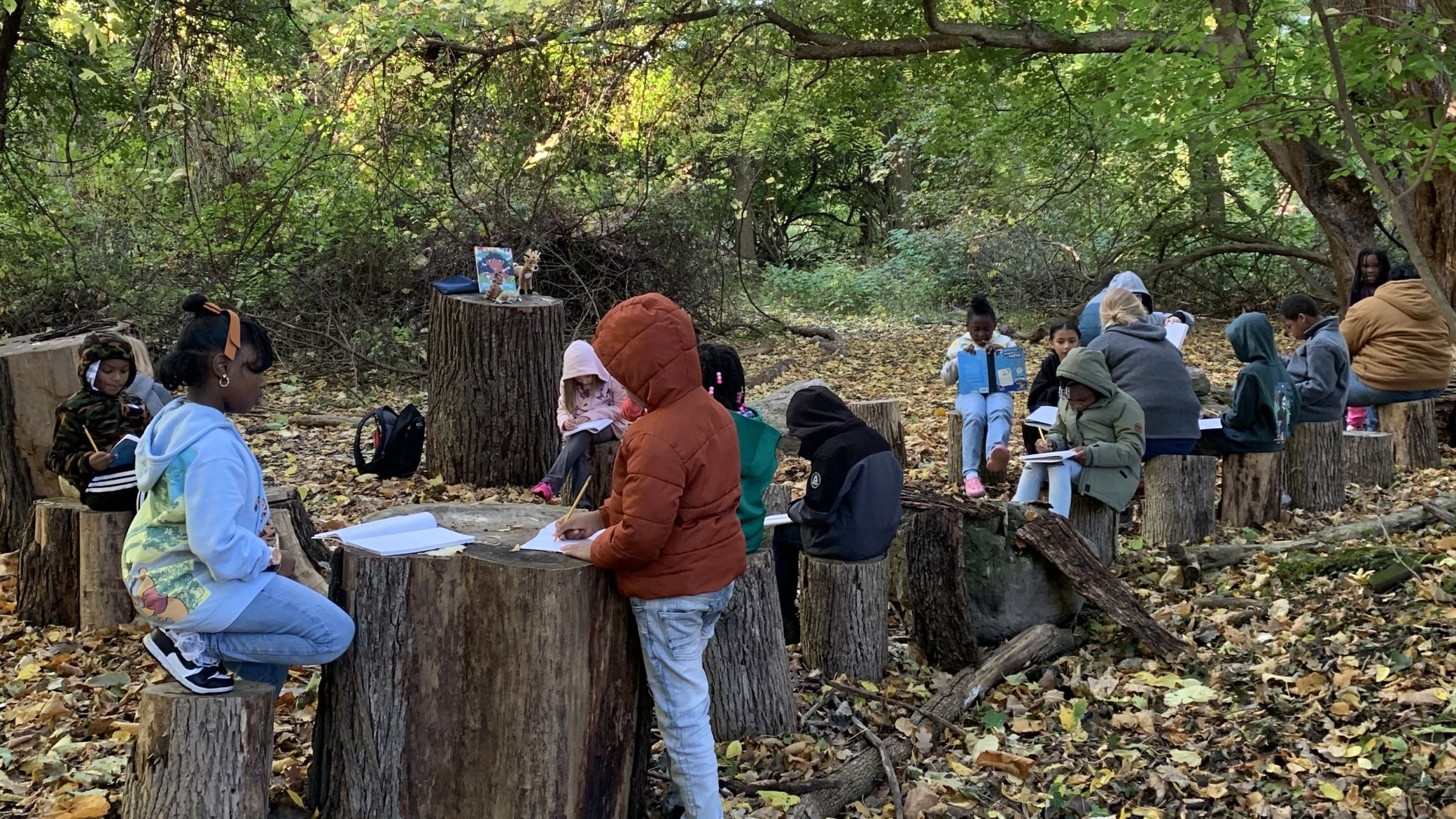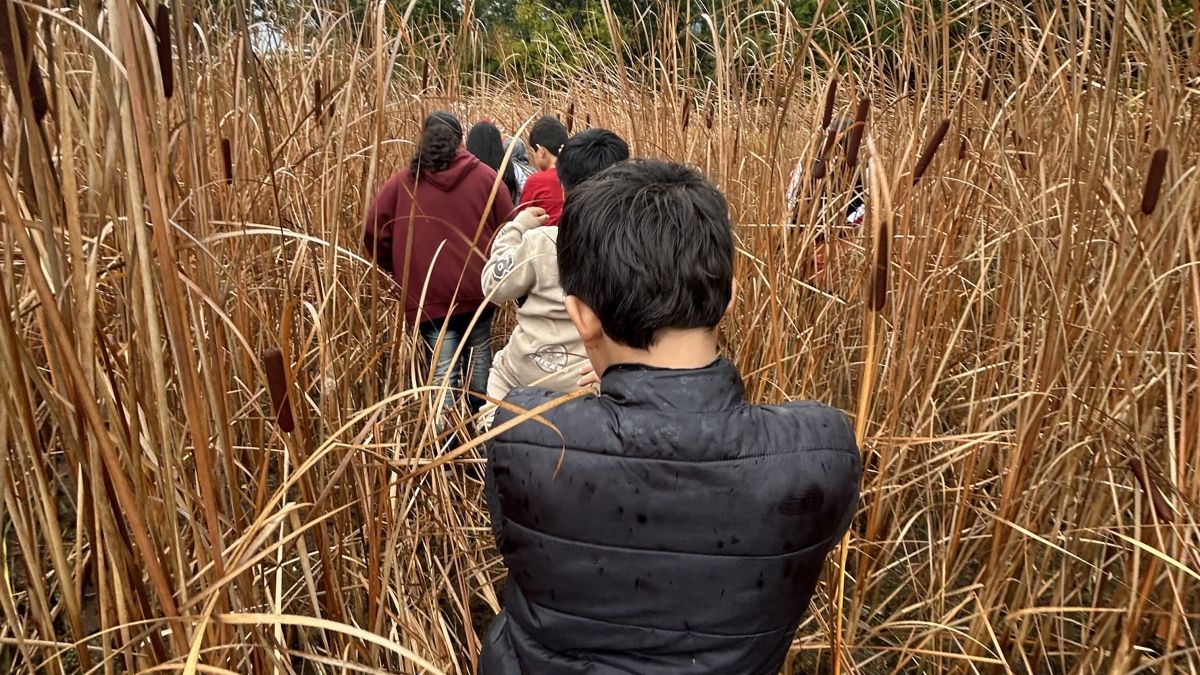
Located in Rochester, New York, the Nature-Based Learning (NBL) Program at Anna Murray-Douglass Academy School No. 12 serves approximately 800 children in grades PreK–6. Within its urban setting, the program connects students to nature through outdoor learning experiences across multiple green spaces, including H.O.P.E. Hollow on University of Rochester property, Highland Park, and school-based gardens and classrooms. The program is host to 42 classes, which all participate in facilitated NBL experiences at least once every three weeks for an hour or more. These experiences are taught collaboratively by Kyra Stephenson, the Nature-Based Learning Coach, and the classroom teacher.
In addition, teachers have access to a nature wagon, an outdoor classroom, and a nature center to independently extend and enhance learning with nature opportunities for students. The program integrates academic standards with exploration, play, and ecological awareness, helping students build strong connections to the natural world and their community.
Natural Start spoke with Kyra Stephenson to learn more about the NBL Program at Anna Murray-Douglass Academy School No. 12.
What is the Rochester Children's Outdoor Bill of Rights and how does the Nature-Based Learning Program at School No. 12 support its efforts?
The Rochester Children’s Outdoor Bill of Rights (COBOR) was developed through a collaborative process led by the City of Rochester with the Mayor’s Youth Advisory Council, Youth Voice One Vision, youth from the Urban Ecologist Program of the Seneca Park Zoo Foundation, and support from the Cities Connecting Children to Nature initiative. The document outlines outdoor activities that all children should have the right to experience, and serves as a tool to help guide priorities and decisions regarding access to nature and funding.
As the Nature-Based Learning Coach at School No. 12, I serve on the Nature Everywhere Action Team, contributing as an implementer, advocate, advisor, and collaborative decision maker. At School No. 12, we help students experience COBOR through quarterly family events and lessons developed with community partners, including Rochester Ecology Partners, city recreation centers, and local libraries.

The video on your website (see below) explains why NBL is important. Who is the target audience for this video, and what has been their reaction?
The target audience for our NBL video includes educators, school administrators, families, and community partners who are interested in understanding the value of having students learn and play with nature. Viewers have responded very positively, expressing excitement about the hands-on, engaging ways students connect with nature, and noting the impact on student well-being, curiosity, academic engagement, and environmental stewardship. Many have shared that the video helped them better understand the importance of NBL and has inspired greater support for implementing NBL practices. It has also opened opportunities for collaboration with community partners and has strengthened advocacy for continued investment in outdoor learning spaces and programming.
Your program is offered through a public school. Do you have advice for educators who would like their program to be part of a public school's offerings?
My advice for educators who want to bring NBL into a public school is simple: open the door. Start with your comfort level and your own connection with nature, remembering that nature is the teacher and you are the guide. Look for ways to incorporate all disciplines–math, science, reading, writing, art, and more–into outdoor experiences. In our program at School No. 12, we have 100% engagement in writing through nature journals, giving every student the opportunity to observe, reflect, and express themselves. Don’t over-plan the time with nature; allow students and the natural environment to guide curiosity, discovery, and inquiry.
There is no bad weather, just the need for the right clothing. Start with a space to store extra clothing so students stay safe, dry, and warm outside, and know that it is okay for children to learn to be comfortable with being uncomfortable. Seek out experts, like myself, and take advantage of workshops and professional development opportunities to gain ideas and confidence in bringing nature-based learning into your pedagogy. Our students often say they feel free during NBL lessons, which is vital, and I see them experiencing what I call “radical joy!”
Start small, build relationships, and embrace the surprises that come with nature-based learning, and you can create meaningful opportunities that become a regular part of the school’s offerings.
Not yet a member of the Natural Start Alliance? Learn more about benefits and join today (it's free)!